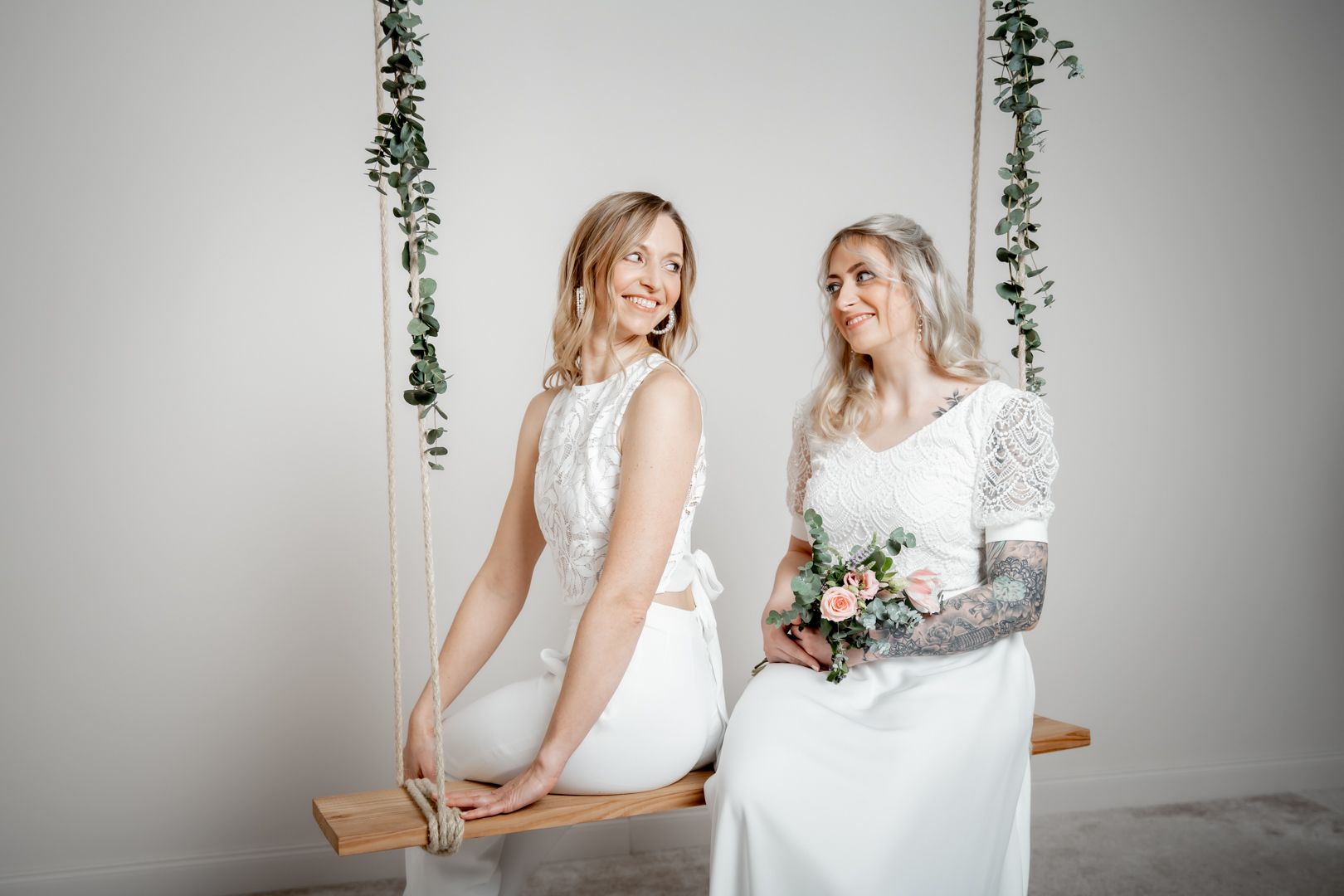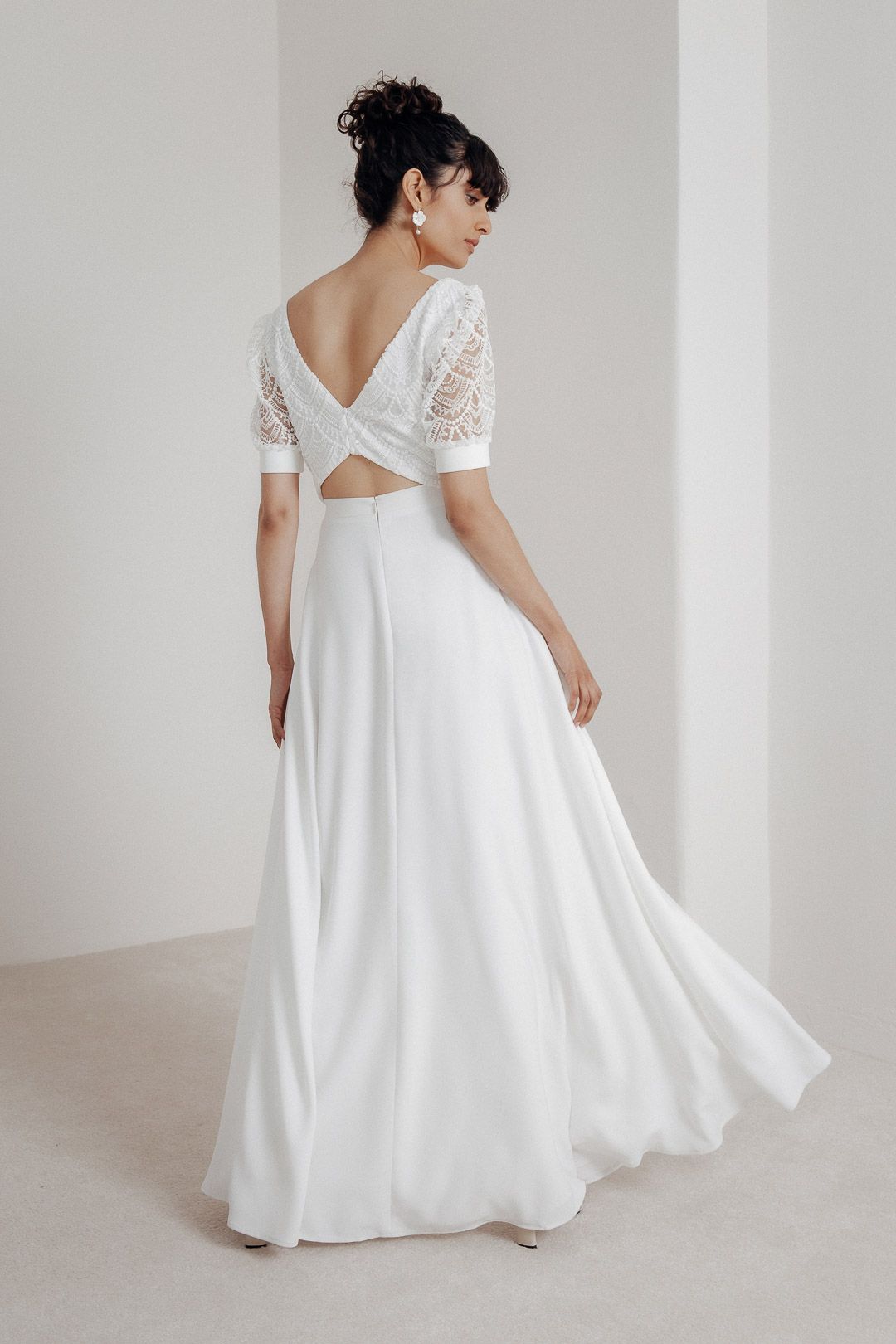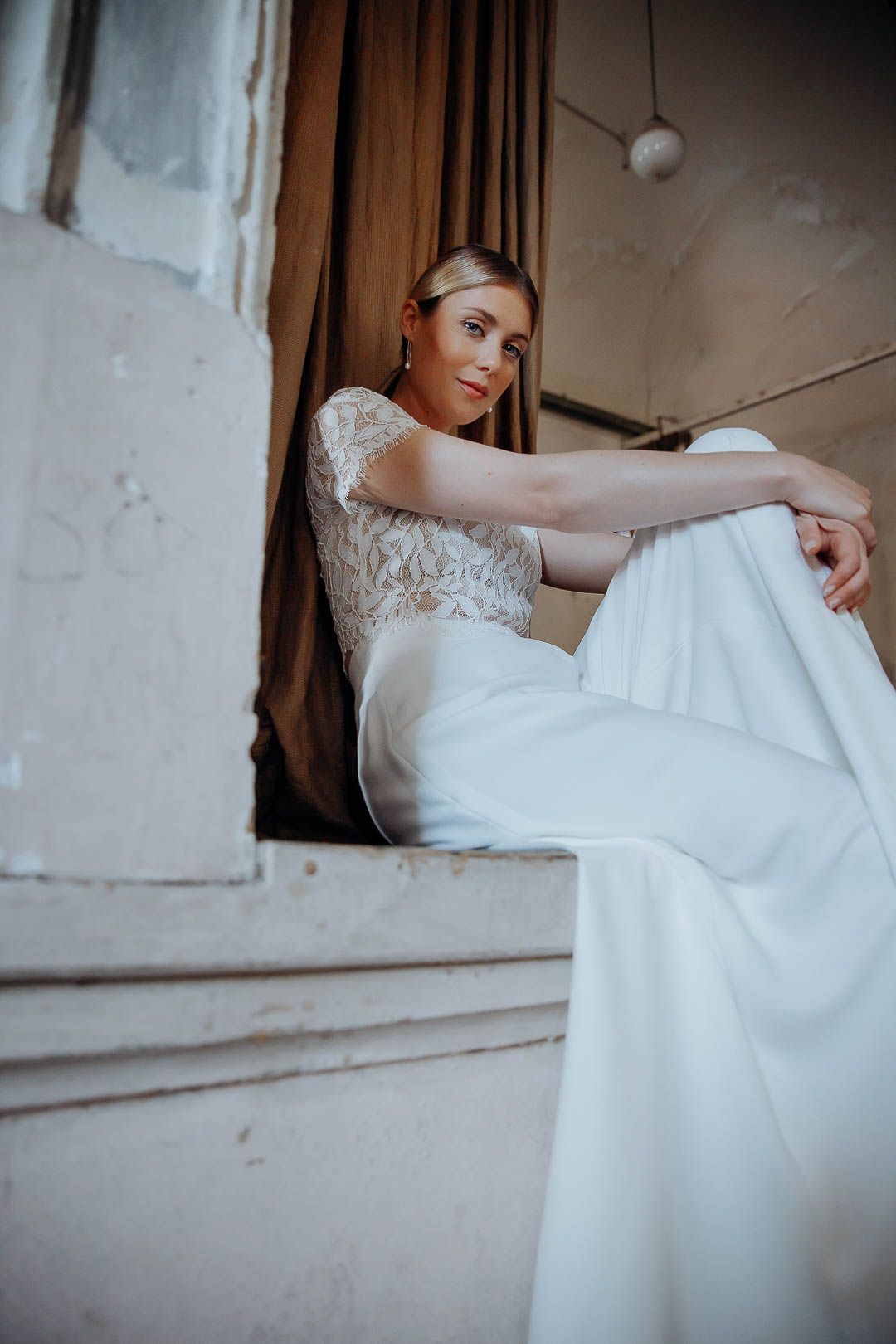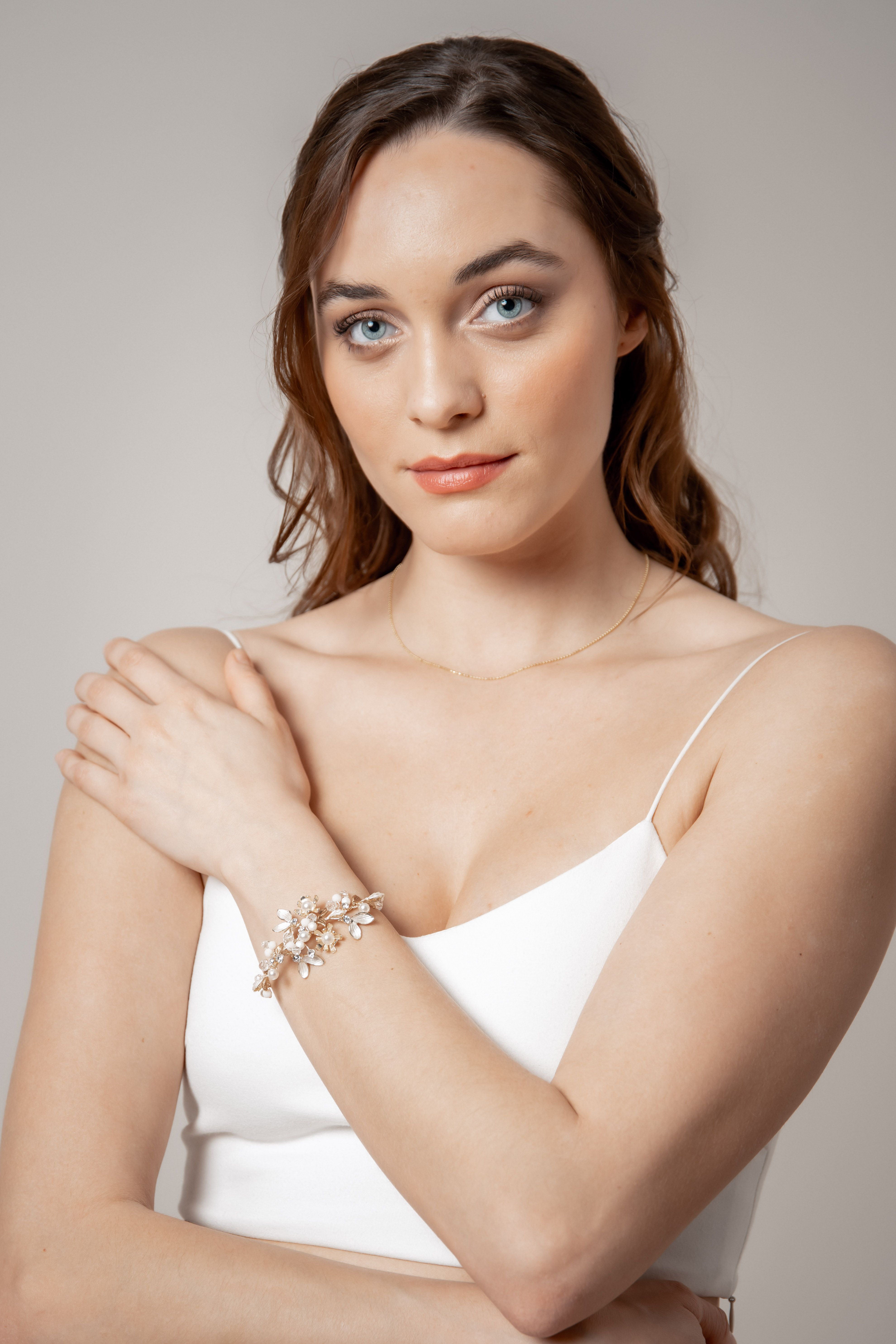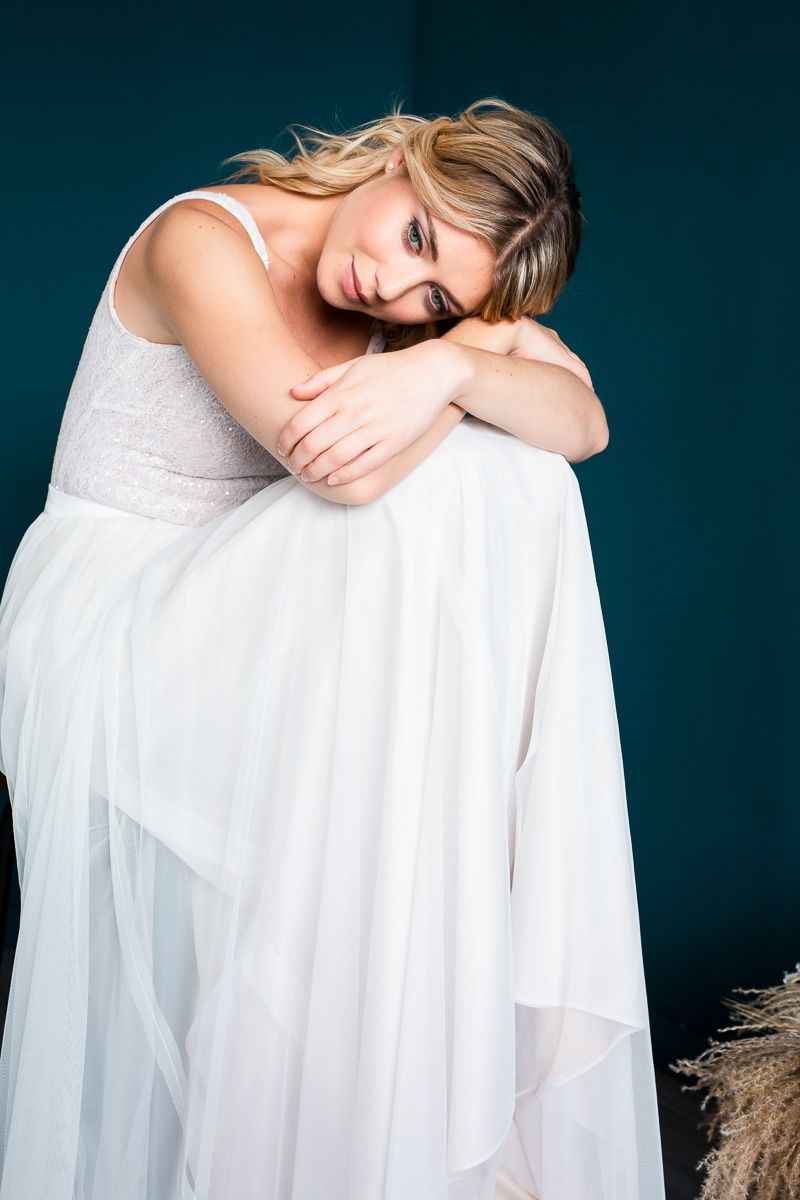noni Bridal Fashion: fabrics & materials
A wedding dress is an emotionally charged piece of clothing that uses very special fabrics. But what is this magic actually made of? If you'd like to know exactly what's going on, you've come to the right place - in Noni's little “bridal fashion material guide”. We'll show you which fabrics we like to use at noni for our bridal fashion designs, inform you about material properties and tell you what you should pay attention to when caring for them.
Wedding dress fabrics for any style & any look
The selection of wedding dresses is overwhelming. So many options – it’s not so easy for some future brides to keep track of everything. It's not just the shape that determines the final look of an outfit, the material also plays a large part. The fabric determines the fall and ultimately the overall style of the wedding outfit. Depending on the quality and properties, the look has a particularly elegant touch or attracts everyone's attention with its volume. Would you prefer an elegantly flowing bridal skirt, or are you more of a romantic type and like fairytale tulle and delicate lace as much as we do? In addition to the classics such as chiffon, tulle and lace, we also use crepe, Jaqcuard and Romanit jersey. It's always worth taking a closer look at the material properties.
Lace bridal fashion
Lace is a textile surface that, depending on the manufacturing process, is made only from yarn or consists of yarn and fabric. The base material can consist of cotton as well as silk, polyester or other synthetic fibers. Machine-made (or traditionally hand-made) creates a fine fabric with a floral or geometric pattern that wins the hearts of many brides. We like to use it for complete bridal tops and also to decorate necklines or skirts. The delicate material conjures up playful, romantic looks in no time.
High-quality lace is not a mass-produced product. We source most of the lace used for our bridal fashion from small, traditional businesses in France. Here the fine material is produced on machines like they were 100 years ago and only after prior ordering. On the one hand, this method of production conserves resources and, on the other hand, the short delivery routes are sustainable.
In our collections we often use: Tulle lace I Macrame lace I Cord lace I Elastic lace I 3D lace.
Washing a wedding dress with lace – is that possible? Yes that works. However, this fine material is particularly sensitive. You should therefore definitely wash your lace top as stated in the care instructions on the label. Professional cleaning is usually recommended to ensure that your favorite item looks just as beautiful after washing. If you still want to clean it yourself, you should do this by hand and with mild detergent. Then let the garment air dry.
Chiffon for a great appearance
The delicate material chiffon is often used for particularly elegant designs and especially for bridal skirts or wedding dresses. The slightly transparent fabric impresses us above all with its flowing drape for a particularly beautiful silhouette. In bridal fashion, either silk chiffon or polyester chiffon is used. Of course, the high-quality natural fiber is particularly elegant, also thanks to its slight sheen. Silk is also breathable, pleasantly cool on the skin and has a soft drape.
But in contrast to a skirt made of polyester chiffon, the natural fiber is less easy to care for and not as versatile. The synthetic fiber definitely has advantages, also with regard to an accident-free wedding celebration. It is durable and resistant, falls depending on the thickness, is also very light and airy and is significantly cheaper. In addition, polyester is almost wrinkle-free and can be easily recycled. In our bridal fashion collections you will find many elegant bridal skirt models that have undergone this resource-saving processing process and are therefore manufactured in a particularly sustainable manner.
Dreamlike tulle
Tulle is a net-like fabric made from synthetic fibers such as polyester, polyamide or nylon. Due to its stiffness, it is ideal for voluminous styles and is often used in bridal fashion as additional reinforcement for the wedding dress and the underskirt. We only use soft tulle in our collections and primarily use it as the outer fabric for our wedding dresses. This material variant is particularly fine-meshed, soft and cuddly. This makes the so-called bridal tulle ideal for fairytale wedding styling and can often be found in the classic veil in addition to the wedding dress.
What makes fine tulle so popular with brides? A skirt made of this material is particularly light and fluffy. It is pleasant on the skin, slightly transparent and, despite its fine structure, durable. It can also be individually embroidered or has glitter added during production for a glamorous style. As with chiffon, tulle is particularly suitable for recycling.
Noble crepe
Crepe is a particularly elegant material that is ideal for clean, simple looks. The fabric has a soft, flowing feel, is firm to the touch and is also opaque. The name refers to a special weaving process in which the warp and weft threads are crossed irregularly. This gives the material a slightly grainy, curly appearance that still falls smoothly. The fabric is also very wrinkle-resistant. Despite its texture, crepe is airy and light and is particularly suitable for a two-piece suit for a summer wedding.
Crepe was originally made from silk, but the fabric is now available as a vegan version made from various basic materials such as cotton, viscose and synthetic fibers.
Romanite jersey – Our favourite for elastic wedding dresses
Romanit Jersey or Double Jersey is an elastic, yet strong material that we like to use for tops or as a lining in our collections. It is dimensionally stable and conceals problem areas due to its nature. As the name suggests, the fabric is doubled and has two right sides. A bridal top made of Romanit jersey has a firm grip and is particularly comfortable to wear. Thanks to its slightly shiny surface, the fabric has a very elegant appearance and can be easily combined with classic bridal fashion materials such as chiffon, tulle or lace.
Romanit jersey is also often used as a lining material for maternity wedding dresses or elastic bridal bodies. The material, which consists of a mix of viscose, nylon or polyester and elastane, is particularly breathable and, depending on the composition, also suitable for winter weddings.
The lining materials of our wedding dresses
Due to the mostly slightly transparent outer material of the wedding dress, the lining material has a very special meaning in bridal fashion. It protects the bride from unwanted views and, depending on the condition, creates an extraordinary look. For example, we like to use satin lining in our wedding dresses because this fabric has a beautiful shine and is opaquely woven. Satin also gives a certain stability due to the weight of the material. Colored acetate lining is also popular, as it creates a great effect under the white outer fabric.
The ECOVERO™ lining made from sustainable viscose fibers ensures particularly high wearing comfort. This lining material is produced using an environmentally friendly process, is skin-friendly and does not become electrically charged.

Your personal appointment
Discover our wedding dresses in the noni showroom
Would you like to discover our dresses on site, slip into your favorites and get professional advice from our charming team? We look forward to your visit to the noni showroom in Cologne!












